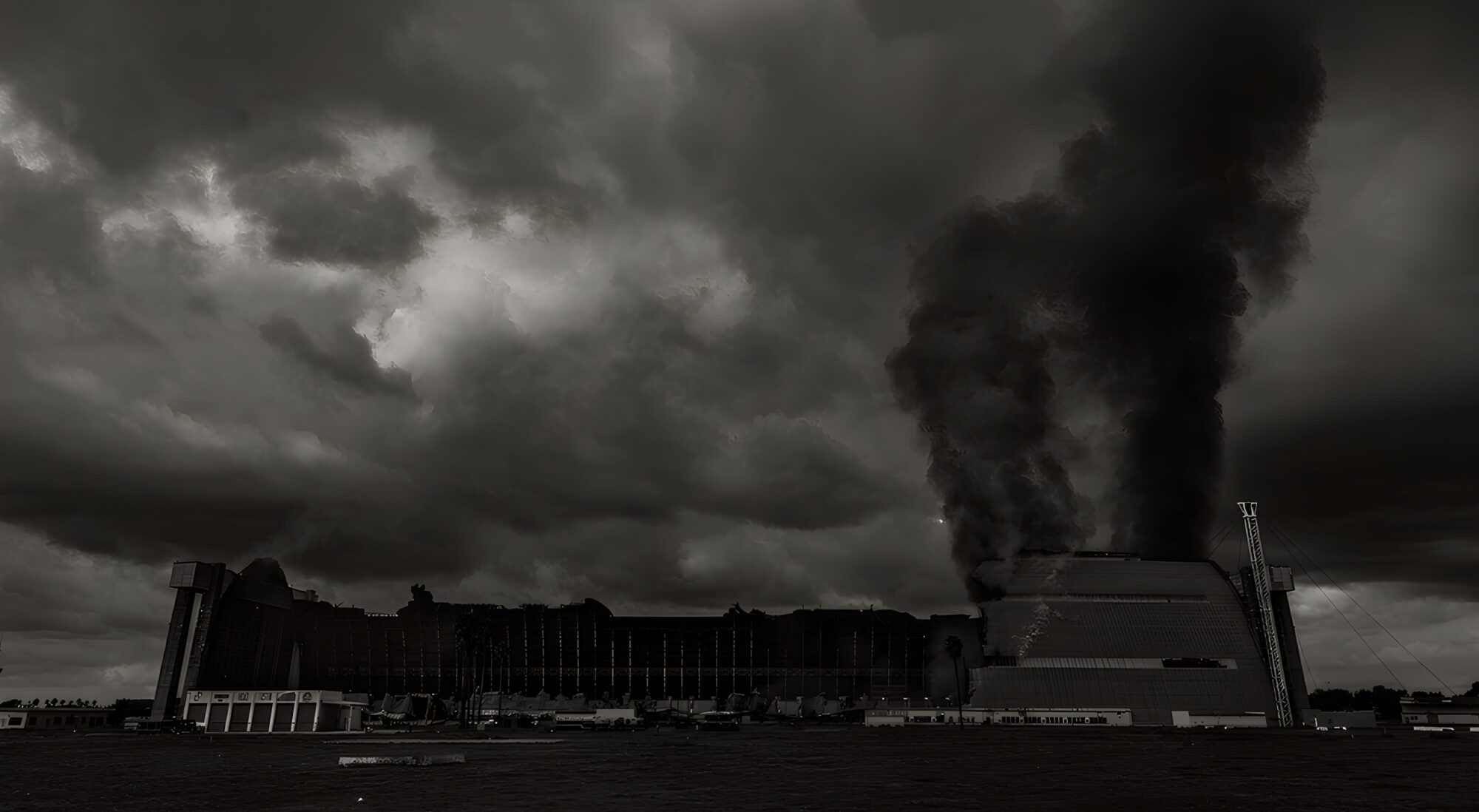Orange County Assessor: Tustin Fire Could Tank Property Values
BY NOAH BIESIADA
Tustin homeowners could see a drop in their property taxes after an old air base hangar burned to the ground, showering the surrounding area in ash and debris containing asbestos.
“This is a disaster,” said County Assessor Claude Parrish in an interview. “You think anyone’s going to want to buy your home right now? No, it’s economic damage.”
“The damage could be for years,” he continued. “Who wants to buy something when you’re near that?”
Now, the county tax assessor is sending out over 23,000 notices to homeowners surrounding the ruins of the hangar, notifying them that they need to submit applications if they want their property values reassessed due to any damage to their homes.
Parrish, who lives near the hangar, said he tried to avoid going home during the fire because he could see the asbestos showering over his house.
“I’ve had flakes as big as a half an inch square,” Parrish said. “We had to put up with that for days.”
It’s unclear just how many homes could see an adjustment, with the letters noting the assessor will “make value adjustments as appropriate,” and stating that any property that suffered over $10,000 in damage “may be eligible for a temporary value adjustment.”
Property taxes are one of the pillars that fund cities and local school boards, meaning any adjustment could see a dip in funding for the agencies that rely on them.
For example, property taxes contributed roughly $23 million to Tustin’s overall $84 million general fund budget during its last fiscal year.
However, Parrish noted it was too early to make any determination on what the impact would be to local tax collection.
Tustin Mayor Austin Lumbard criticized the roll out of the notices, saying the assessor’s office didn’t send any messages to the city and he found out about the issue when it showed up in his own mailbox.
“The assessor sending something out about property damage without coordinating with anyone … could potentially lead to unnecessary alarm for other residents,” Lumbard said in a Monday interview. “Getting a letter like this is not helpful.”
Parrish said he isn’t required to work with any local agencies, and that he’s required by law to run tests like this after a major fire.
“There’s a loss in value definitely, the question is how much,” Parrish said. “We’re going to do a survey and find out how much.”
The Future of the Hangars
The final pieces of the hangar came down last Thursday, when demolition crews knocked down the doors that have stood since the 1940s – the last piece of the hangar that was still standing following the fire.
The future of the land is also up in the air, after Tustin leaders shot down plans from the county government to turn the spot into a regional park because they took too long to develop it.
The south hangar, which was unaffected by the blaze that burned down the hangar to the north, is also still waiting on future plans, but the site is too expensive for most people to use according to Lumbard.
“I probably get a call every week with someone who has an idea for it,” Lumbard said. “When we get to the point of actually engaging with these folks and explain the challenges, how there’s no active utilities, the challenges of cost and upkeep, they often back away.”
The city has already budgeted $8 million to try and get the hangar to the point that it can operate, and occasionally hosts events there, but right now it’s still costing the city money every year.
“We’re interested in talking with the right folks,” Lumbard said. “But it’s going to take someone with serious financing to come in.”
Noah Biesiada is a Voice of OC reporter and corps member with Report for America, a GroundTruth initiative. Contact him at [email protected] or on Twitter @NBiesiada.
